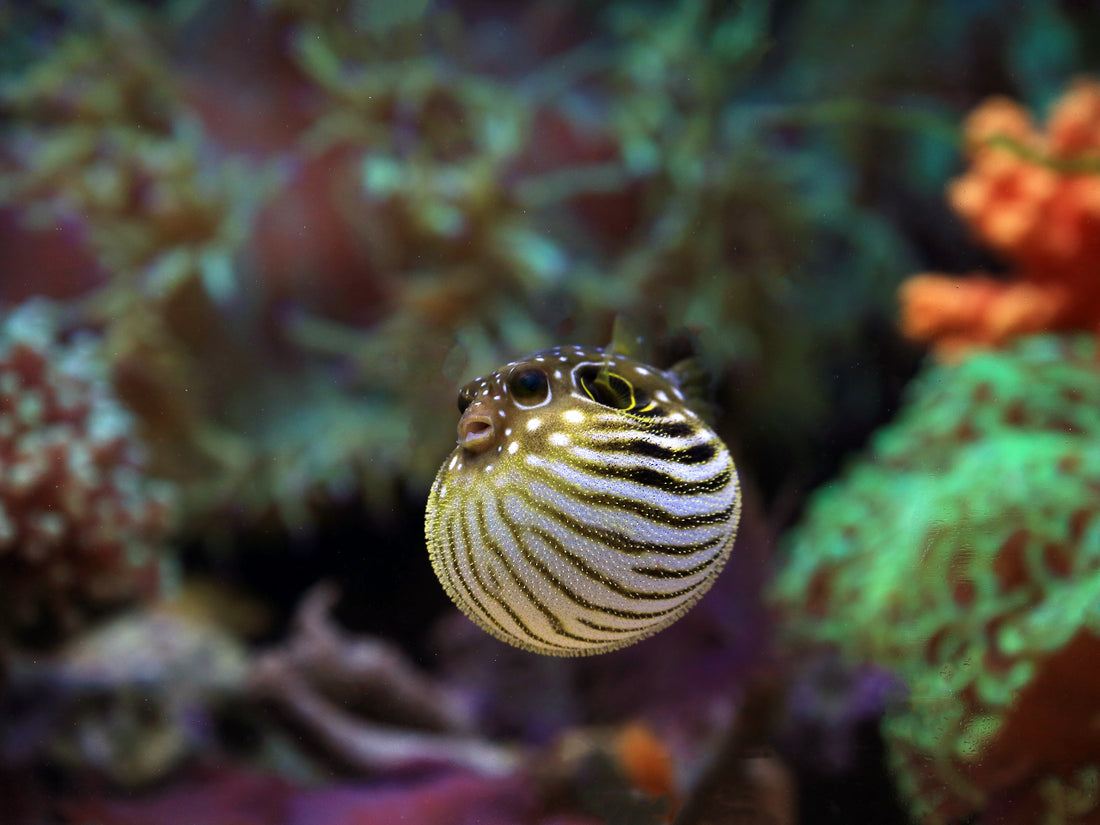Fugu, the Japanese pufferfish, is one of the most famous foods in Japan. Although it is notorious for containing toxic tetrodotoxin, its unique taste and texture still attract many diners. The edible part of fugu is low in fat and high in protein. In Japanese cuisine, both the skin and meat of fugu can be used to make a variety of dishes, the cooking methods of which are diverse.
What is Fugu?

There are many species of fugu - more than 100 species worldwide and about 40 species in Japan. They possess body spines and will inflate themselves when frightened. Its ovaries, liver, eyes, and blood contain a fatal toxin. Fugu has been eaten by the Japanese for centuries. Fugu bones found in kaizuka (ancient garbage dumps) prove that they were caught and consumed for more than two thousand years in Japan.
Deaths from fugu consumption were so common that in the 16th century, the Tokugawa shogunate passed a law prohibiting fugu consumption in Edo (modern Tokyo) and outlying areas. In other areas, especially western Japan, the consumption of fugu was common. These areas, especially Yamaguchi Prefecture, are the most important areas for fugu consumption and culinary training today.
As the power of the shogunate weakened, consumption became common again. In the Meiji era (1867-1912), fugu was again banned in many areas. It is said that the Emperor of Japan never ate fugu dishes due to the prohibition. It was not until 1888 that Japan's first Prime Minister, Ito Hirobumi (1841-1909), repealed the prohibition because he appreciated the taste of fugu. Thereafter, the Tokyo Fugu Ryori Renmei (Cooking Alliance) was formed in 1930, dedicated to publicizing the safe way to handle fugu and promote fugu consumption.
Nowadays, it requires at least three years of training for a chef to be licensed to be able to sell fugu dishes. Chefs must follow strict procedures for preparation when it comes to handling fugu. Japan's strict food protection standards make the chances of the poisonous fugu reaching diners or shoppers extremely low. Even so, at least three people die from eating fugu every year, usually amateur anglers and people who cooked fugu in their homes.
Dishes of Fugu
 Because of its tender meat and chewy skin, fugu is a delicacy that people want to try even though they know the fish was originally poisonous. Whether eaten raw, boiled or fried, fugu is a delicious dish. Here are some fugu dishes in Japan:
Because of its tender meat and chewy skin, fugu is a delicacy that people want to try even though they know the fish was originally poisonous. Whether eaten raw, boiled or fried, fugu is a delicious dish. Here are some fugu dishes in Japan:
Tessa (Fugu Sashimi): Tessa is one of the most common ways to eat fugu in Japan. It is specially called Usuzukuri (very thin sliced) because the fugu is sliced paper-thin, much thinner than other sashimi. These thin slices are arranged in a circular shape, like a flower.
Karaage (Fried Fugu): This is a dish in which fugu is cooked in the same way as Japanese fried chicken. After being marinated in spices, the fugu is coated with flour and potato starch and then deep-fried until golden. The fried fugu is crispy on the outside and succulent on the inside.
Tecchiri Nabe (Fugu Hot Pot): The hotpot is made with broth, fugu, and various vegetables. The fugu is eaten with a special sauce.

Sumibi Yaki Fugu (Grilled Fugu): Fugu grilled over charcoal that is juicy and tender with a special smoky flavor. Teriyaki sauce can be brushed on the fugu during grilling to add extra flavor.
Fugu Ojiya (Fugu Porridge): It is a rice porridge with fugu slices boiled in water or broth. Japanese people make it by pouring rice into a hot pot after eating. It is nutritious and delicious, and especially popular in winter.
Fugu Skin: Just the skin of fugu can be eaten in a variety of ways, raw, boiled, grilled, and fried. For women, it is popular because of its high level of collagen.

